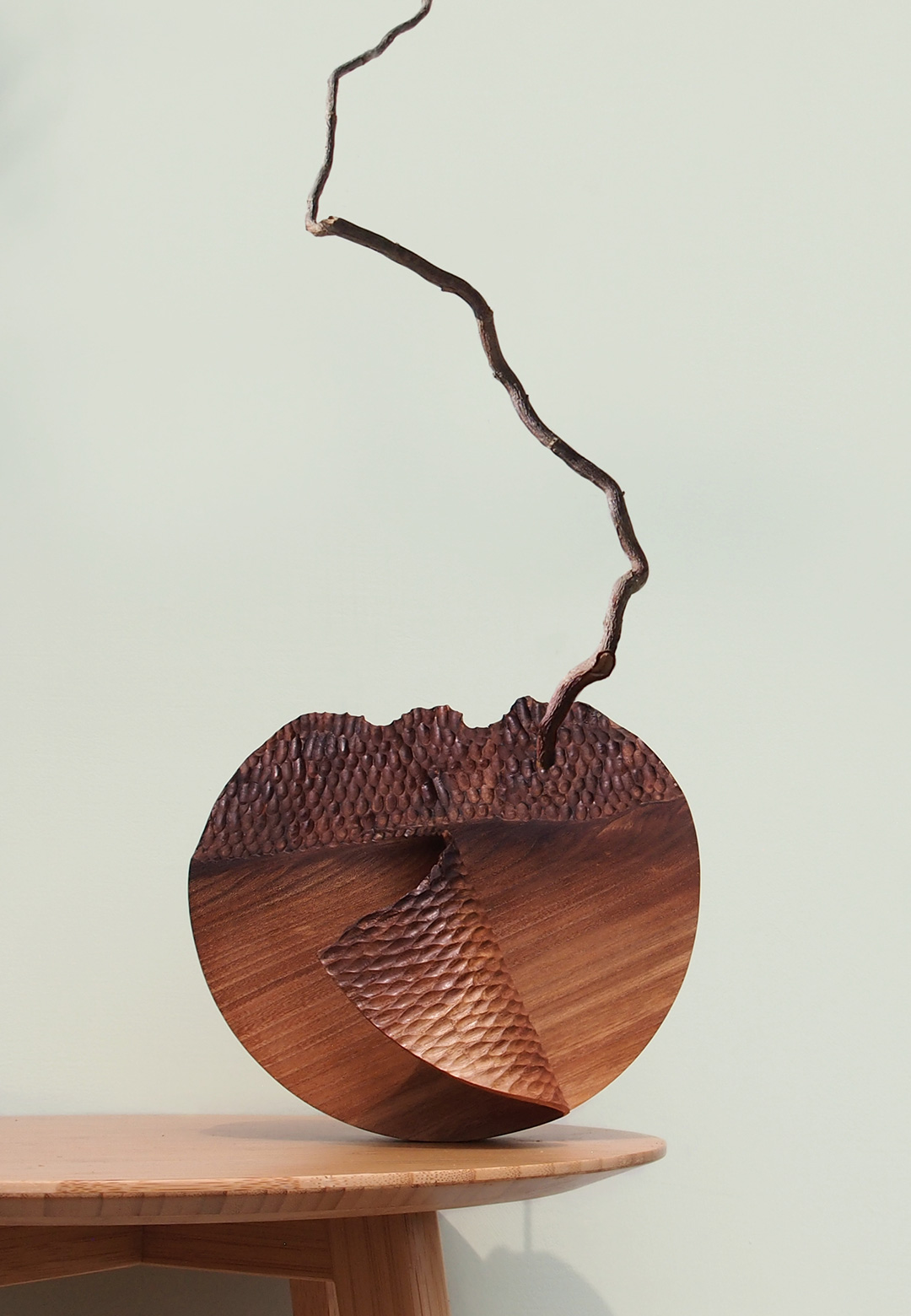Eccentric forms, solo materiality, or impeccable craftsmanship—what induces elements of intrigue in a mundane object? Often, an artist or a designer envisions a silhouette and spills it out on paper as elementary drawings. These sketches then encounter materials—a trial and error of compatibility—until one dovetails the other. These choices involve careful consideration of constraints that chaperon each material in tandem with the demands presented by a form, as one guides the other. However, for some, this web of limitations becomes a playground, redefining the boundaries of tactility, as a component of enchantment. Delicate curves and arcs are born from rigidity, manipulating the mind’s eye and putting forth a new identity for a substance.
“There is much-hidden beauty lying beneath the surface of the wood—intricate grain patterns, knots, figuring, or hidden colours that are revealed. As a craftsperson, you aim to unveil this hidden beauty, transforming the raw material into a refined and captivating form,” share Louise Goodman and David Blay, founders of Lood Studio. Residing in the Kent countryside in southeast England and surrounded by its picturesque beauty, the woodworking studio interweaves traditional crafts of woodturning and steam bending, spelling an oeuvre of modern pieces that epitomise the essence of the countryside while celebrating its innate beauty. Goodman and Blay work individually with their diverse and self-taught disciplines, adhering to a complimentary palette of forms and ideas in tandem, and occasionally collaborating on some product designs. “Our work aims to create a deliberate manipulation of the wood's shape, taking it from a stark static form and coaxing it into a beautiful one with graceful curves and elegant arcs. This aesthetic appeal and the ability to transform a rigid material into something fluid and sculptural is a captivating aspect of these crafts,” the designers elaborate.
Having a studio in the enticing countryside and woodland allows Goodman and Blay to cultivate an emotive connection to the natural environment, which gets translated further into their craft. Nature becomes the primary source of inspiration for their pieces—comprising vases, incense holders, serving boards, and more—infused with a sense of purpose, authenticity, and profound connection with the environment. “The symbiotic relationship between your craft and the materials you work with can deepen this sense of connection, as you witness the transformation of raw wood into beautiful and functional objects,” they continue. They resort to wood as their medium of expression, given its unique beauty and texture that can vary greatly. To mould this organic material into sinuous entities, they employ the art of steam bending that aligns with the principles of organic and natural aesthetics. “By showcasing the raw and unadorned qualities of wood, these crafts foster an appreciation for its innate beauty and the value of sustainable, renewable resources,” the product designers explain.
Barring the semantics of untouched wood, a majority of the sleek wood sculptures conceived by the design duo feature a common unit—a testimony of their kinship. A thin layer of their skin peels off from one of their edges, giving the viewer a sneak peek of what is within. This element speaks of a fluidity that wood is often not associated with and evokes a sense of movement, grace, and organic beauty. “I have always had a long fascination with the concept of repeating forms and structures running throughout nature both in the micro and macro, and the concept of seeing past surface and boundaries to the patterns, details, and structure that exist within,” says Goodman. When the duo began to experiment with steam bending, its possibilities and limitations, the peeling edge effect organically evolved and conformed to their fascination with seeing the world within. Moreover, this allowed the designers to make wood behave contrary to its assumed properties, 'peeling away, being pulled into shape or organically shedding its skin.'
Goodman and Blay first employed steam bending when bending some strips of wood to repair a vintage garden trug and eventually fell in love with the craft as a medium to form and bend a very rigid, static material. The process of making begins with choosing the right kind of wood for the project—taking into account grain orientation, density, and moisture content to ensure optimal results. Steam bending involves subjecting the wood to moist heat, by steaming it in a steam box. The steam then softens the lignin—the natural glue that holds the wood fibres together—making the wood pliable. As the wood is bent, it undergoes temporary plastic deformation but retains its structural integrity once cooled and dried. Obtaining the desired bends involves months worth of trial and error alongside the creation of appropriate hand-made jigs around which the wood is bent. “By incorporating textures, such as burls, knots, cracks and carved surfaces, it invites viewers to engage with the work not only visually but also through touch—evoking a sense of curiosity and inviting a deeper exploration of your piece,” the designers point out.
Through their intricate work donned in a garb of simplicity, Lood Studio celebrates the imperfections and irregularities of the wood, embracing its character rather than choosing to conceal it. Pushing the boundaries of turning a static material into a fluid, curving, graceful one, they create pieces that showcase the natural beauty of wood in all its perfections and flaws. Through an art that is ensconced outside the beams of spotlights, they bend and turn their design expression into pieces that vacillate between tradition and modernity. The charm of their sculptural designs originates from the smooth contours that are achieved from a rather unyielding material—rendering its tactility with a refreshing perception. Speaking of their work and the ethos it represents, the duo says, “The natural textures, once concealed, become prominent and celebrated, showcasing the individuality and character of each piece of wood, drawing the observer's gaze to appreciate the intricate details and subtle variations that make each piece of wood truly unique.”






 Sign in with email
Sign in with email










What do you think?